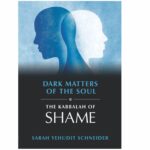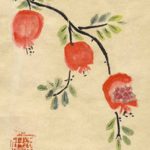Sisera’s Mother Sets the Tone for our Rosh HaShana Shofar
Rosh HaShana, 5775 / 2014
Sarah Yehudit Schneider
And in the seventh month, on the first day of the month…it is for you a day of teruah(sounding the shofar).[1]
: וּבַחֹדֶשׁ הַשְּׁבִיעִי בְּאֶחָד לַחֹדֶשׁ …יוֹם תְּרוּעָה יִהְיֶה לָכֶם
The essen tial obligation of Rosh HaShana (from the Torah) is not to pray all day, or to get dressed up and have a big family meal, but rather, simply, to hear the shofar. Yet what exactly does Hashem have in mind with this command? Would a short toot suffice or must we hear it several times over? Should the shofar’s blast be long and steady or perhaps, instead, staccato?
tial obligation of Rosh HaShana (from the Torah) is not to pray all day, or to get dressed up and have a big family meal, but rather, simply, to hear the shofar. Yet what exactly does Hashem have in mind with this command? Would a short toot suffice or must we hear it several times over? Should the shofar’s blast be long and steady or perhaps, instead, staccato?
The search for answers to this question led the rabbis to a most unlikely role model: the cruel mother of our ferocious adversary, Sisera.
The Talmud’s investigation begins with the Torah which calls Rosh HaShana the “day of teruah (sounding the shofar).” The next clue is the Targum which translates teruah into Aramaic as yevava(יבבה). [2] The third clue is that the root of that Aramaic word (י.ב.ב) is also Hebrew and appears only once in the entire Bible—in the bloody tale of Sisera’s battle with the Israelites.[3]
Most are familiar with the story of Devorah, the prophetess, who is renowned as the only recorded woman judge. The Bible describes how she sat beneath a palm tree ruling on legal matters and resolving disputes. During her judgeship Devorah determined that it was time to initiate a military revolt against Yavin, the tyrannical Canaanite king. [4]
Sisera, the general of the Canaanite army, led a fierce campaign. Nevertheless, the Israelites prevailed. Sisera fled for his life and sought refuge at the home of Chaver HaKini and his wife, Yael, because he believed them to be allies but, in fact, they were not.
Yael invited Sisera into their tent and fed him milk and cheese so that he’d fall asleep. As he lay on his side Yael took a tent peg and hammered it into his temple and he died.
Sisera’s mother anxiously awaits his return, yet her hope begins to fail. Time passes and she fears the worst. “Sisera’s mother looks out her window and weeps (ti’yavev – yevava). Her wise attendants comfort her with alternative explanations for her son’s delay: Probably he is just busy enjoying his triumph, raping and pillaging the vanquished Israelites.” [5]
Based on this connection between teruah, yevava, and the lament of Sisera’s mother (also a yevava), the rabbis conclude that the shofar on RH should simulate her mournful plaint.[6] It consists of broken sounds like someone sobbing. And furthermore, this verse that mentions yevava also describes her “looking out the window” as she moans. The Hebrew word for window in this passage (החלון) has the numerical equivalent of 99. The rabbis read this as a hint and conclude that since Sisera’s mother wailed 99 times, so should we follow her lead and sound our new year’s shofar (ideally) 99 +1 times as well.[7]
Whoa! Hearing the shofar on Rosh HaShana is, by some counts, the most spiritually potent moment of the year, and yet we model our performance of this holy mitzvah on Sisera’s hateful mother. How could the rabbis dignify her with this sacred honor?
Yet there is another context where 99+1 cries occur. The midrash informs us that “a woman on the birthstone in the grip of labor sobs 100 times—99 of which are for death, and 1 (the last one) is for life.”[8] What does it mean that she cries “for death?”
Birthing (as we know) is a painful, dangerous, and often life-threatening ordeal. The body is pushed to its limits. Primal drives dominate as the body does whatever it must to expel the fetus. There is no stopping the contractions and the pain. The ego (or conscious self) loses its grip and surrenders to the body’s dictates. (This is one reason, says R. Hirsh, for the chatas a woman brings after childbirth.) [9]
This upheaval in the psyche is an ego death. The conscious self is supposed to be on top. It is supposed to restrain the body’s animal drives and assure their conformity to social norms. It is supposed to control its surroundings and keep all pain at bay. Whenever the balance of power shifts, and the ego must serve (or surrender to) its “inferior,” the ego suffers unbearable shame. Its humiliation is so intolerable that the ego cries “for death”—anything to relieve the shame. From its perspective, physical death is preferable to ego death.
And yet, if the ego accepts its indignity and surrenders to the providence of the moment it suffers a searing ego death to be sure… but then, voila, it revives in the end. And its new self is always a sliver more enlightened than its old self. HaShem says to the ego: “You and I cannot fit into the same space.”[10] When the ego retreats, its vacated territory gets filled with ohr hachayim (אור החיים), the gift of deepened awareness and renewed vigor.
As below so above. We are constantly giving birth to ourselves. And here as well, there are labor pains which come in the form of failures, setbacks, embarrassments and frustrations. Our wounded ego wants to die but our soul overrules its request and cries instead for life. There is no birth without labor pains and ego-death. Humility is the gateway to higher consciousness. There is new “life” (ohr hachayim) in every unwelcomed reality and we must track it down which requires that we first surrender to it (even if only for a moment). That is what it means to “cry for life”—to surrender to ego death for the sake of (quality of) life.
Sisera’s mother is the opposite of that. She is the archetype of those who prefer bodily death to ego death—those who wallow in the 99 cries for death…who would rather self-destruct than eat humble pie. She is the archetype of those around us who proudly admit their penchant for death and mock our attachment to life[11] …who are so wracked by debilitating shame that they cannot concede even an iota to those (i.e., us) who are “supposed to be” their inferiors. [12]
The Mishna speaks of Avraham:
There were ten generations from Noah to Avraham. They were lawless and corrupt yet HaShem was long-suffering. [He delayed their penalties and hoped for their turnaround]. When Avraham came [and enlightened the world,] HaShem placed into his spiritual account the reward of all those ten generations before him.[13]
On RH we blast the shofar 100 times. With ninety-nine we lament the sorrows of life and bewail its tribulations.[14] We stand in solidarity with the world, cry for its pains and deplore its injustices. Yet we don’t get stuck in that loop, for in the end we cry for life. We accept the circumstances of our lives and trust G-d’s good intentions. We ask that He “reveal to us the path of life”[15] …the option that will most enhance our quality of life, the one that holds the greatest cache of ohr hachayim (light of life). And through our cry for life we salvage all the scattered slivers of life that are spurned by those who choose death and disparage life.
The shofar takes us on a journey from death consciousness to life consciousness. It’s sobbing, broken cries (teruah andshevarim) connect us to the dark and broken places of our soul, the cellars of our psyche—the places where death consciousness still thrives. To raise a spark we must make contact with it.[16] The shofar takes us down into the wastelands of our soul, but it does not leave us there. Its long and steady blasts (tekiyot) pull us back to life. They awaken our passion for life—our acceptance of ego-death as the secret ingredient to quality of life, for there is no peace (inner or outer) without humility.
When the shofar blows this year, let us choose life with every fiber of our being. And may the power of our collective “cry for life” pull the whole world onto its “path of life (אורח חיים).” And may it be a healthy, joyful, bountiful, light-filled, love-filled, peace-filled, life-celebrating new year for all.
זכרנו לחיים. מלך חפץ בחיים. וכתבנו בספר החיים. למענך א-להים חיים:
——————–
[1] Lev. 23:24
[2] Targum Onkeles (Aramaic Translation of theTorah), Lev. 23:24.
[3] Judges 5:28.
[4] Judges 4-5.
[5] Judges 5:28-30.
[6] TB RH 33b.
[7] There are several versions of these numbers: 1) Sisera’s mother (SM) sobbed 100 times (counting the kolel) and we blow 100 times. 2) SM sobbed 101 times (100 + the kolel) and we blow 100 times. 3) SM sobbed 99 times (not counting the kolel because it is not an actual cry but a conceptual unity) and we blow 100 times.
[8] MR Lev. 27:7.
[9] R. Samson Raphael Hirsch on Lev. 22:1-7.
[10] TB Sota 5a.
[11] No opinions here. People just speaking for themselves: https://www.youtube.com/watch?v=FkDP7CH1U4M&feature=em-share_video_user ; https://www.youtube.com/watch?v=pbecLIBDZbM
[12] Richard Landes, “Why the Arab World is Lost in an Emotional Nakba, and How We Keep it There.” http://www.tabletmag.com/jewish-news-and-politics/176673/emotional-nakba
[13] Avot 5:2.
[14] The truth is, we actually only blow 40 “cries for death” that imitate Sisera’s mother’s sobs. The other 60 blasts are tekiyot (the unbroken “cries for life” that awaken simcha). Every broken cry is bracketed by a tekiya before and a tekiya after.
[15] Psalms 16:11.
[16] Baal Shem Tov on the Torah, Achari Mot 2.
[17] Prayer inserted into the first blessing of the Shemona Essrei from RH to YK




